Crowning glory: Aston Martin’s DB9 powers into its second decade with new Carbon editions

The Aston Martin DB9 is ten. In today's fast moving motor industry, accelerated product cycles mean that models rarely reach their first decade. At the upper end of the market, things are rather different. These customers want permanence, solidity and dependability from their brands, and the essential rightness of the very first DB9 back in 2004 formed the bedrock of Aston's hugely successful decade.
Before DB9, there were only inklings of what was to come in the shape of the Vanquish and DB7, the former a niche supercar, the latter a flawed but elegant GT. DB9 moved the game on substantially, and it's a testament to Aston's engineers and designers that the car enters its second decade without conceding anything to its competitors.
From a strictly objective point of view, the DB9 isn't quite as quick or as efficient as other, newer, supercars. But in the ten years it's been on sale, there has been something of a sea change in the make-up of this hallowed sector. For one thing, the market has moved up; £200k is now considered a baseline price for a cutting edge GT, the territory occupied by Ferrari, McLaren and AM's own Vanquish.
The DB9's natural milieu is alongside Bentley's GT and Maserati's GranTurismo, also long-lived designs that have survived through fettling and gradual transformation, rather than revolution, but it's increasingly joined by ultra-performance offerings from the likes of Jaguar, Audi, Mercedes and BMW, big brands that don't quite have the cachet of Aston. For your £130k+, you can have beauty, elegance, craft and one of the most evocative badges on the road.
So it's a survivor, but a deserving one, and even the shortest acquaintance with the car confirms this. The latest iterations of the DB9 are the special Carbon editions, contrasting black and white versions with visual tweaks and added extras in the shape of some specially crafted carbon fibre detailing inside and out. It's subtle, but that's the point, for the DB9 has always appealed to the discerning.
Sure, there's AM's ageing V12 at its core, an engine that appeals to emotion rather than reason, sonorous not sensible. And despite the craft and care that's gone into the interior, the car's ergonomic shortcomings are still there to be endured. It has the dual character of the classic GT, either cruising majestically or scything into bends with gusto. The exhaust isn't too stentorian, efficiency not too lacking and, best of all, the body shape remains close to perfection.
We love the DB9. In recent weeks it's been finally confirmed that Aston Martin has the funds in place to create its successor, thanks largely to a technological partnership with Mercedes' AMG division. Tradition will probably dictate that the V12 stays, and right now it's hard to imagine AM's big GT without it. What's harder to foresee is how the DB9's successor will evolve visually. Marek Reichman and his team are doubtless setting out the forms right now; they have their work cut out to trump this evergreen motoring icon.
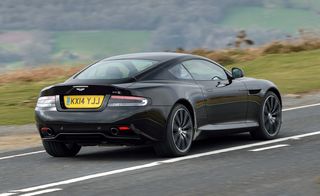
The exclusive editon commands the road with its sheer physical power. Its sleek, dark exterior projects a confidence that complements its 4.6 seconds 0-60 mph sprint time
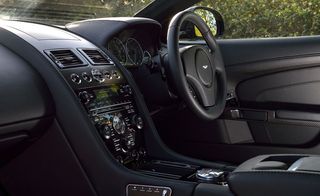
The interior - as opulent as the exterior - has been kitted out with carbon fibre trim throughout. The DB9 exudes timeless elegance with its simplicity and classic dark theme

Despite the craft and care that's gone into the interiors, however, the car's ergonomic shortcomings are still there to be endured
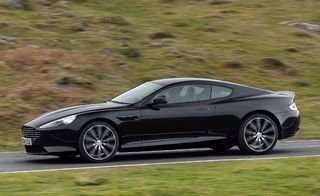
The exhaust isn't too stentorian, efficiency not too lacking and the body shape remains close to perfection
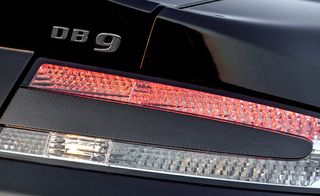
The car's carbon fibre detailing is subtle - but that's the point, for the DB9 has always appealed to the discerning
Wallpaper* Newsletter
Receive our daily digest of inspiration, escapism and design stories from around the world direct to your inbox
Jonathan Bell has written for Wallpaper* magazine since 1999, covering everything from architecture and transport design to books, tech and graphic design. He is now the magazine’s Transport and Technology Editor. Jonathan has written and edited 15 books, including Concept Car Design, 21st Century House, and The New Modern House. He is also the host of Wallpaper’s first podcast.
-
 The visual feast of the Sony World Photography Awards 2024 is revealed
The visual feast of the Sony World Photography Awards 2024 is revealedThe Sony World Photography Awards 2024 winners have been revealed – we celebrate the Architecture & Design category’s visual artists
By Ellie Stathaki Published
-
 Don’t Move, Improve 2024: London’s bold, bright and boutique home renovations
Don’t Move, Improve 2024: London’s bold, bright and boutique home renovationsDon’t Move, Improve 2024 reveals its shortlist, with 16 home designs competing for the top spot, to be announced in May
By Ellie Stathaki Published
-
 Perfumer H has bottled the scent of dandelions blowing in the wind
Perfumer H has bottled the scent of dandelions blowing in the windPerfumer H has debuted a new fragrance for spring, called Dandelion. Lyn Harris tells Wallpaper* about the process of its creation
By Hannah Tindle Published
-
 New Aston Martin Ginza showroom brings customer personalisation to life
New Aston Martin Ginza showroom brings customer personalisation to lifeAston Martin Ginza showroom is a two-storey space in The Peninsula Tokyo hotel and a new hub for the car maker
By Jonathan Bell Published
-
 Aston Martin Vantage is reshaped and revitalised for a new generation
Aston Martin Vantage is reshaped and revitalised for a new generationThe Aston Martin Vantage is a sports car with an authentic racing heritage, now upgraded and enhanced with new styling and fresh interiors
By Jonathan Bell Published
-
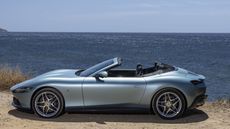 Year in review: the top 10 cars of 2023, as selected by Wallpaper’s Jonathan Bell
Year in review: the top 10 cars of 2023, as selected by Wallpaper’s Jonathan BellWhat were the best four-wheeled offerings of 2023? Transport editor Jonathan Bell takes us through the year’s most intriguing automobiles
By Jonathan Bell Published
-
 The J.Laverack Aston Martin .1R bicycle is a pedal-powered, two-wheeled hypercar
The J.Laverack Aston Martin .1R bicycle is a pedal-powered, two-wheeled hypercarAston Martin and J.Laverack reveal their exquisitely crafted road bike
By Jonathan Bell Published
-
 Zoute Grand Prix is a car fest like no other at a pristine Belgian beachside town
Zoute Grand Prix is a car fest like no other at a pristine Belgian beachside townAmy Serafin takes to the well-heeled streets of Knokke-Heist to experience the Zoute Grand Prix, its annual cavalcade of classic car-related events, from a rally to an auction
By Amy Serafin Published
-
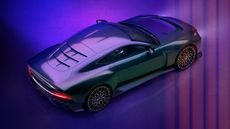 Aston Martin Valour celebrates 110 years of the British sports car manufacturer
Aston Martin Valour celebrates 110 years of the British sports car manufacturerUnashamedly macho, the limited-edition Aston Martin Valour is a birthday gift for moneyed enthusiasts of old-school driving sensations
By Jonathan Bell Published
-
 The Little Car Company’s garage of pocket exotics are small, speedy and beautiful
The Little Car Company’s garage of pocket exotics are small, speedy and beautifulThe Little Car Company specialises in bespoke ‘junior classics’, exacting, scaled-down reinterpretations of iconic (and expensive) automobiles injected with electric driving delight
By Jonathan Bell Published
-
 Aston Martin’s Q New York showroom blends classic modernism with cutting-edge technology
Aston Martin’s Q New York showroom blends classic modernism with cutting-edge technologyQ New York is an invite-only space on Park Avenue, Aston Martin’s latest foothold in the American market
By Jonathan Bell Published